Blueberry Cheesecake
RSP 10684
Grower: N/A
General Information
- Accession Date
- February 21, 2017
- Reported Plant Sex
- Female
- Report Type
- StrainSEEK v2 3.2Mb
- DNA Extracted From
- Stem
The strain rarity visualization shows how distant the strain is from the other cultivars in the Kannapedia database. The y-axis represents genetic distance, getting farther as you go up. The width of the visualization at any position along the y-axis shows how many strains there are in the database at that genetic distance. So, a common strain will have a more bottom-heavy shape, while uncommon and rare cultivars will have a visualization that is generally shifted towards the top.
Chemical Information
Cannabinoid and terpenoid information provided by the grower.
Cannabinoids
No information provided.
Terpenoids
No information provided.
Genetic Information
- Plant Type
- Type II
File Downloads
The bell curve in the heterozygosity visualization shows the distribution of heterozygosity levels for cannabis cultivars in the Kannapedia database. The green line shows where this particular strain fits within the distribution. Heterozygosity is associated with heterosis (aka hybrid vigor) but also leads to the production of more variable offspring. When plants have two genetically different parents, heterozygosity levels will be higher than if it has been inbred or backcrossed repeatedly.
The ratio of reads mapped to Y-contigs to reads mapped to the whole Cannabis genome (Y-ratios) has been demonstrated to be strongly correlated with plant sex typing. This plot shows the distribution of Y-ratios for all samples in our database which were sequenced with the same method (panel or WGS) as this sample and where this sample falls in the distribution.
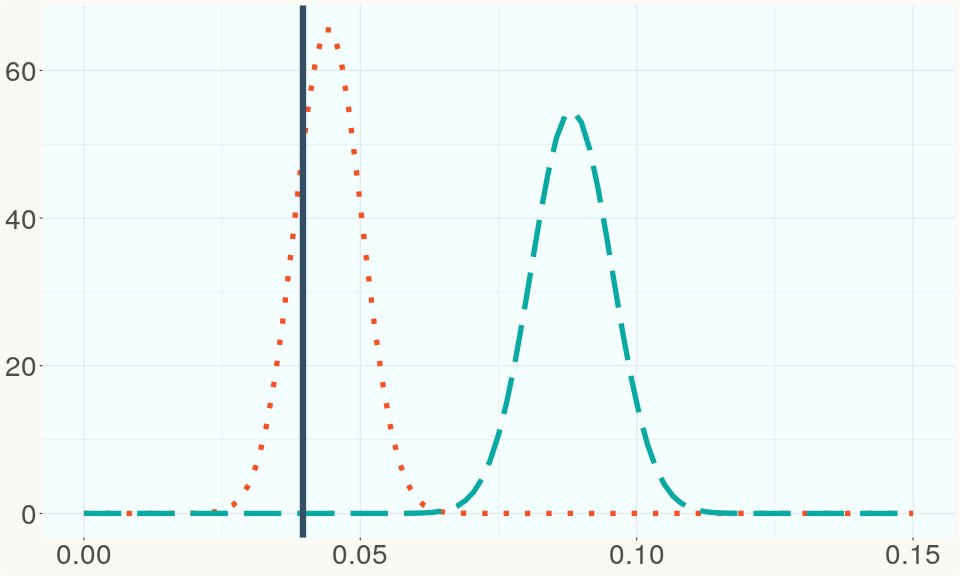
This chart represents the Illumina sequence coverage over the Bt/Bd allele. These are the three regions in the cannabis genome that impact THCA, CBDA, CBGA production. Coverage over the Active CBDAS gene is highly correlated with Type II and Type III plants as described by Etienne de Meijer. Coverage over the THCA gene is highly correlated with Type I and Type II plants but is anti-correlated with Type III plants. Type I plants require coverage over the inactive CBDA loci and no coverage over the Active CBDA gene. Lack of coverage over the Active CBDA and Active THCA allele are presumed to be Type IV plants (CBGA dominant). While deletions of entire THCAS and CBDAS genes are the most common Bt:Bd alleles observed, it is possible to have plants with these genes where functional expression of the enzyme is disrupted by deactivating point mutations (Kojoma et al. 2006).
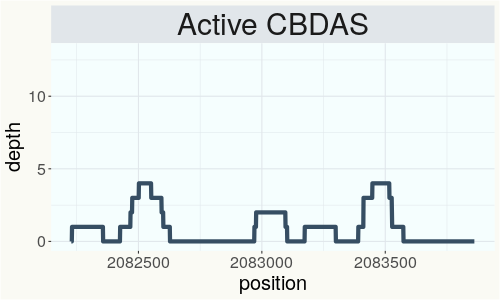
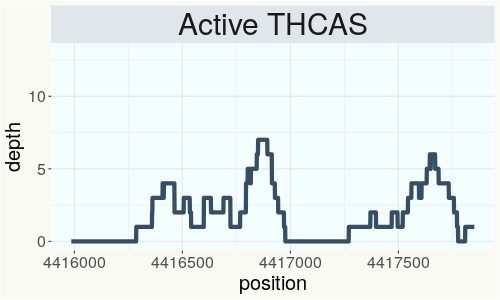
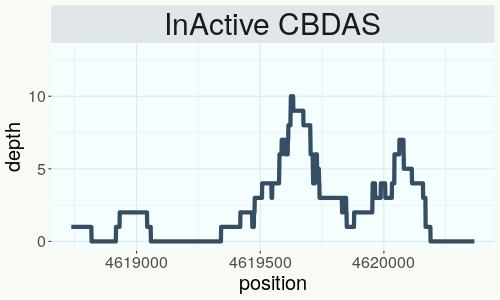
This chart represents the Illumina sequence coverage over the CBCA synthase gene.
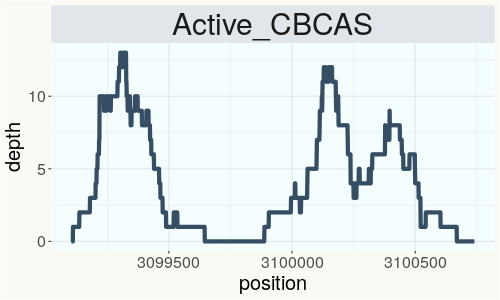
Variants (THCAS, CBDAS, and CBCAS)
No variants to report
Variants (Select Genes of Interest)
| PKSG-2b | c.1152T>A | p.Asn384Lys | missense variant | moderate | contig700 | 1950486 | A/T | |
| PKSG-2b | c.1132C>G | p.Leu378Val | missense variant | moderate | contig700 | 1950506 | G/C |
|
| PKSG-2b | c.1117A>G | p.Ile373Val | missense variant | moderate | contig700 | 1950521 | T/C | |
| PKSG-2b | c.31A>T | p.Thr11Ser | missense variant | moderate | contig700 | 1951851 | T/A | |
| PKSG-2b | c.-2_1dupATA | start lost & conservative inframe insertion | high | contig700 | 1951880 | A/ATAT |
|
Nearest genetic relatives (All Samples)
- 0.111 Doug s Varin (RSP11243)
- 0.116 Electra (RSP11366)
- 0.117 Domnesia (RSP11184)
- 0.121 Serious Happiness (RSP10763)
- 0.131 Trump x Trump (RSP11466)
- 0.136 Lift (RSP11378)
- 0.137 Rest (RSP11377)
- 0.147 NSPM1 (RSP11362)
- 0.149 Cherry Blossom (RSP11320)
- 0.157 JL 4th Gen 7 (RSP11153)
- 0.164 Joy (RSP11380)
- 0.165 Whitey (RSP11363)
- 0.167 CBG-#40 (RSP11444)
- 0.167 UnObtanium (RSP11611)
- 0.168 Thank You Jerry (RSP11459)
- 0.170 Durban Poison #1 (RSP10996)
- 0.171 SHERBERT (RSP11355)
- 0.171 Suver Haze (RSP11364)
- 0.172 Badger (RSP11614)
- 0.173 JL X NSPM1 14 (RSP11473)
Most genetically distant strains (All Samples)
- 0.403 JL 3rd Gen Father (RSP11196)
- 0.385 JL yellow (RSP11075)
- 0.385 Unknown--Cherry Wine---001- (RSP11268)
- 0.383 Northern Lights (RSP11501)
- 0.376 80E (RSP11213)
- 0.373 Feral (RSP11205)
- 0.373 Cherry Blossom (RSP11323)
- 0.370 Tanao Sri -46- (RSP11486)
- 0.367 IUP2 (SRR14708257)
- 0.366 R1in136 (SRR14708226)
- 0.366 Feral (RSP11206)
- 0.366 Feral (RSP10890)
- 0.365 Feral (RSP10892)
- 0.361 R1in136 (SRR14708227)
- 0.361 Cherry Blossom (RSP11318)
- 0.360 JL 4th Gen 5 (RSP11199)
- 0.356 IUP3 (SRR14708256)
- 0.356 80E (RSP11212)
- 0.355 Cherry Blossom (RSP11301)
- 0.354 JL 3rd Gen Mother (RSP11214)
Nearest genetic relative in Phylos dataset
- Overlapping SNPs:
- 67
- Concordance:
- 50
Nearest genetic relative in Lynch dataset
- Overlapping SNPs:
- 6
- Concordance:
- 6
Blockchain Registration Information
- Transaction ID
-
1f6518e024aa84ee
268ccc7c3ee0e685 189a588136942559 ece3c824f4354c43 - Stamping Certificate
- Download PDF (867.6 KB)
- SHASUM Hash
-
ee20d99f28f46958b8a23c0ce21fae5f d893f002547fc939 c2d968d654228f35